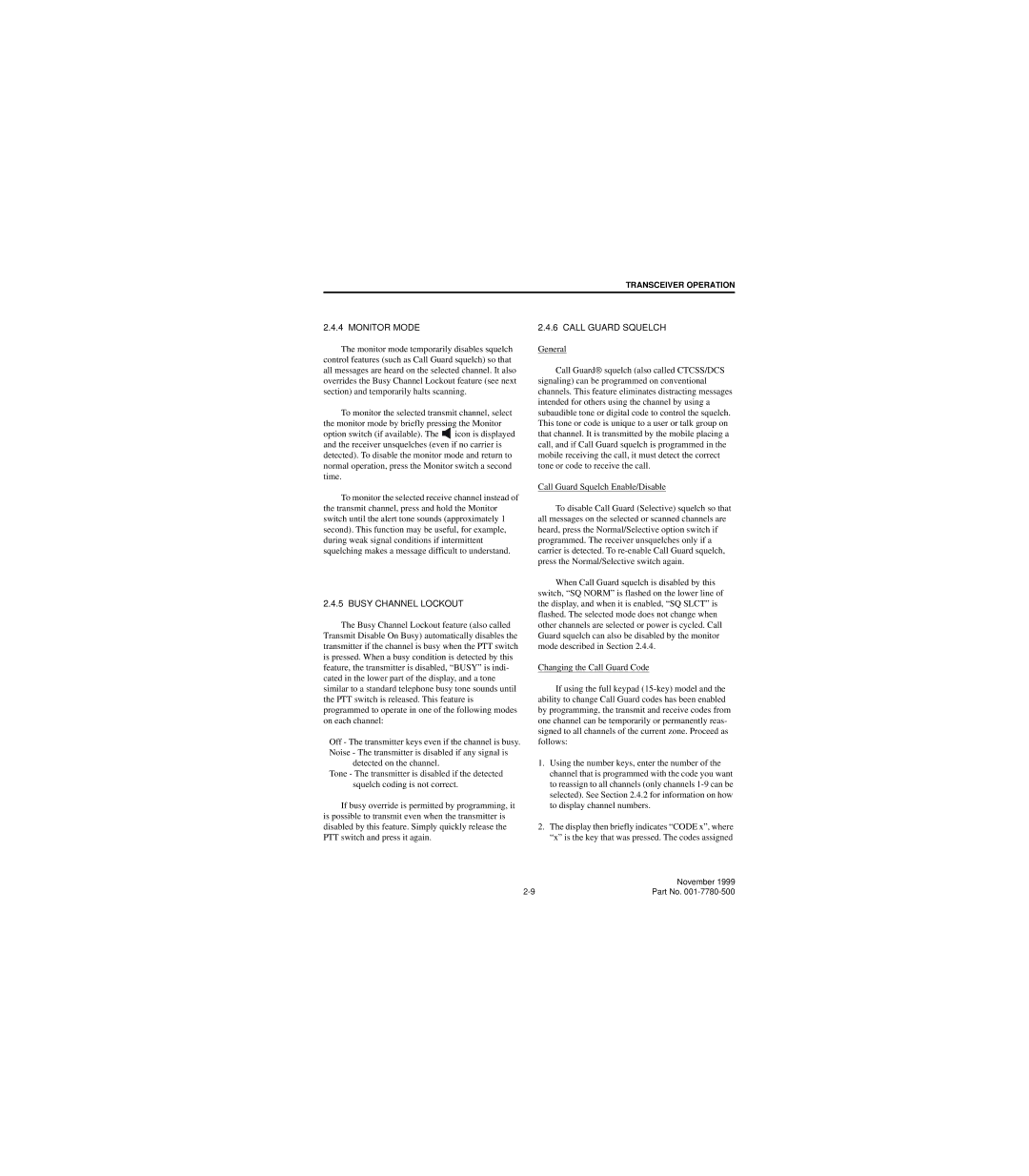TRANSCEIVER OPERATION
2.4.4 MONITOR MODE
The monitor mode temporarily disables squelch control features (such as Call Guard squelch) so that all messages are heard on the selected channel. It also overrides the Busy Channel Lockout feature (see next section) and temporarily halts scanning.
To monitor the selected transmit channel, select the monitor mode by briefly pressing the Monitor
option switch (if available). The ![]() icon is displayed and the receiver unsquelches (even if no carrier is detected). To disable the monitor mode and return to normal operation, press the Monitor switch a second time.
icon is displayed and the receiver unsquelches (even if no carrier is detected). To disable the monitor mode and return to normal operation, press the Monitor switch a second time.
To monitor the selected receive channel instead of the transmit channel, press and hold the Monitor switch until the alert tone sounds (approximately 1 second). This function may be useful, for example, during weak signal conditions if intermittent squelching makes a message difficult to understand.
2.4.5 BUSY CHANNEL LOCKOUT
The Busy Channel Lockout feature (also called Transmit Disable On Busy) automatically disables the transmitter if the channel is busy when the PTT switch is pressed. When a busy condition is detected by this feature, the transmitter is disabled, “BUSY” is indi- cated in the lower part of the display, and a tone similar to a standard telephone busy tone sounds until the PTT switch is released. This feature is programmed to operate in one of the following modes on each channel:
Off - The transmitter keys even if the channel is busy. Noise - The transmitter is disabled if any signal is
detected on the channel.
Tone - The transmitter is disabled if the detected squelch coding is not correct.
If busy override is permitted by programming, it is possible to transmit even when the transmitter is disabled by this feature. Simply quickly release the PTT switch and press it again.
2.4.6 CALL GUARD SQUELCH
General
Call Guard® squelch (also called CTCSS/DCS signaling) can be programmed on conventional channels. This feature eliminates distracting messages intended for others using the channel by using a subaudible tone or digital code to control the squelch. This tone or code is unique to a user or talk group on that channel. It is transmitted by the mobile placing a call, and if Call Guard squelch is programmed in the mobile receiving the call, it must detect the correct tone or code to receive the call.
Call Guard Squelch Enable/Disable
To disable Call Guard (Selective) squelch so that all messages on the selected or scanned channels are heard, press the Normal/Selective option switch if programmed. The receiver unsquelches only if a carrier is detected. To
When Call Guard squelch is disabled by this switch, “SQ NORM” is flashed on the lower line of the display, and when it is enabled, “SQ SLCT” is flashed. The selected mode does not change when other channels are selected or power is cycled. Call Guard squelch can also be disabled by the monitor mode described in Section 2.4.4.
Changing the Call Guard Code
If using the full keypad
1.Using the number keys, enter the number of the channel that is programmed with the code you want to reassign to all channels (only channels
2.The display then briefly indicates “CODE x”, where “x” is the key that was pressed. The codes assigned
| November 1999 |
Part No. |
